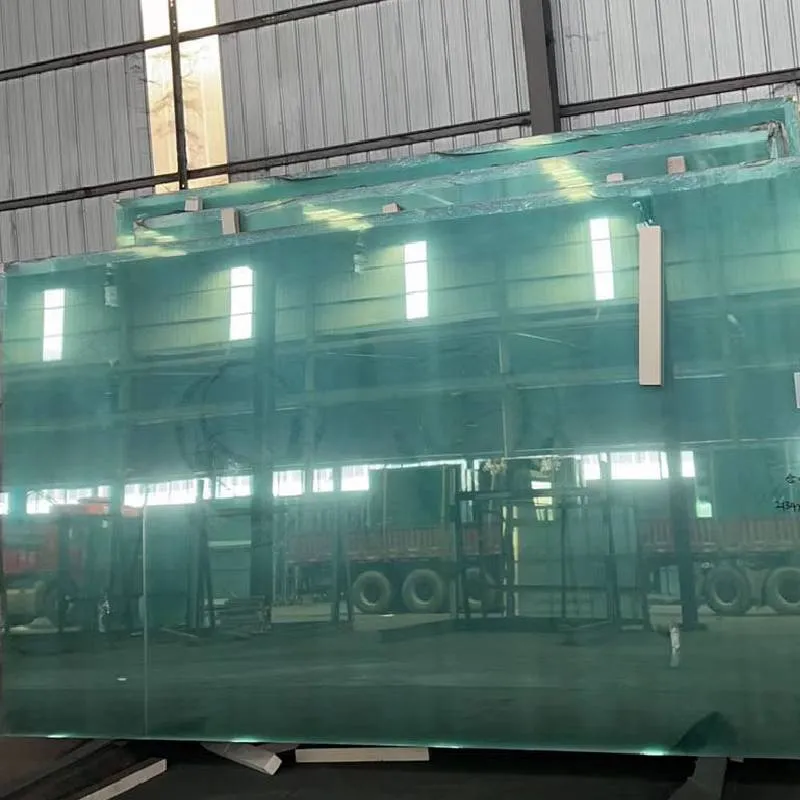Understanding Float Glass Types A Guide to Selection and Applications
Float glass is a widely used glass product that is recognized for its high optical clarity and smooth surface. Produced through a unique float process, this type of glass is formed by floating molten glass on top of molten tin, resulting in a uniform thickness and glossy finish. The versatility of float glass makes it ideal for a variety of applications, including architecture, automotive industries, and household uses. In this article, we will explore the different types of float glass, their properties, and their various applications.
Types of Float Glass
1. Clear Float Glass This is the most basic form of float glass, distinguished by its transparency and minimal color distortion. Clear float glass is typically used in windows, shower enclosures, and display cases, where clarity is paramount. It has excellent light transmission properties and can be treated with coatings to enhance its thermal performance.
2. Tinted Float Glass Tinted float glass is designed to reduce glare and heat from sunlight. It comes in various colors, including blue, gray, bronze, and green, which not only provide aesthetic appeal but also improve energy efficiency in buildings. By absorbing and reflecting heat, tinted glass helps maintain a comfortable indoor temperature, making it popular for commercial and residential buildings.
3. Low-E Float Glass Low emissivity (Low-E) float glass is treated with a microscopic coating that reflects heat back into the room while allowing sunlight to enter. This type of glass is particularly advantageous for energy conservation, as it reduces the need for heating and cooling, leading to lower utility bills. Low-E glass is ideal for exterior windows in residential and commercial constructions, promoting energy efficiency while maintaining comfort.
4. Patterned Float Glass Patterned float glass features designs or textures that create an aesthetic appeal while providing privacy. Common patterns include frosted, reeded, and etched styles. Patterned glass is often used in applications where light is desired but visibility from the outside is restricted, such as bathroom windows, office partitions, and decorative features.
5. Laminated Float Glass This type of float glass consists of two or more layers of glass bonded by an interlayer, usually made of polyvinyl butyral (PVB). Laminated glass offers improved safety and security, as it holds together when shattered, reducing the risk of injury. It also provides sound insulation and UV protection. Laminated float glass is commonly used in automotive windshields, skylights, and facades.
6. Tempered Float Glass Tempered glass is manufactured through a process of extreme heating and rapid cooling, which increases its strength. This type of glass is more resistant to thermal stress and impacts. Tempered float glass is ideal for high-traffic areas, such as storefronts, glass doors, and shower enclosures, where safety is a concern.
float glass types
Applications of Float Glass
Float glass has a broad range of applications across various industries
- Architecture Float glass is frequently used in building facades, windows, and doors. Its aesthetic qualities and energy efficiency make it a favored choice for contemporary architecture.
- Automotive In the automotive industry, float glass is utilized for windshields, side windows, and sunroofs. The safety and strength of tempered and laminated glass are particularly valued.
- Interior Design Float glass is also employed in interior design elements such as mirrors, cabinetry, and shower doors. Its versatility allows for innovative design solutions.
- Solar Energy Float glass is a critical component in solar panels, where its transparency and durability help maximize energy absorption.
Conclusion
The selection of the appropriate type of float glass is crucial for ensuring the functionality, safety, and aesthetic appeal of a project. With diverse options such as clear, tinted, Low-E, patterned, laminated, and tempered glass, float glass can meet the specific demands of various applications. As technology advances, the development of new glass types will continue to expand the possibilities for architects, designers, and manufacturers, enhancing both the beauty and performance of glass products in our daily lives. Understanding these different float glass types enables consumers and professionals alike to make informed decisions that best suit their needs.
 Afrikaans
Afrikaans  Albanian
Albanian  Amharic
Amharic  Arabic
Arabic  Armenian
Armenian  Azerbaijani
Azerbaijani  Basque
Basque  Belarusian
Belarusian  Bengali
Bengali  Bosnian
Bosnian  Bulgarian
Bulgarian  Catalan
Catalan  Cebuano
Cebuano  Corsican
Corsican  Croatian
Croatian  Czech
Czech  Danish
Danish  Dutch
Dutch  English
English  Esperanto
Esperanto  Estonian
Estonian  Finnish
Finnish  French
French  Frisian
Frisian  Galician
Galician  Georgian
Georgian  German
German  Greek
Greek  Gujarati
Gujarati  Haitian Creole
Haitian Creole  hausa
hausa  hawaiian
hawaiian  Hebrew
Hebrew  Hindi
Hindi  Miao
Miao  Hungarian
Hungarian  Icelandic
Icelandic  igbo
igbo  Indonesian
Indonesian  irish
irish  Italian
Italian  Japanese
Japanese  Javanese
Javanese  Kannada
Kannada  kazakh
kazakh  Khmer
Khmer  Rwandese
Rwandese  Korean
Korean  Kurdish
Kurdish  Kyrgyz
Kyrgyz  Lao
Lao  Latin
Latin  Latvian
Latvian  Lithuanian
Lithuanian  Luxembourgish
Luxembourgish  Macedonian
Macedonian  Malgashi
Malgashi  Malay
Malay  Malayalam
Malayalam  Maltese
Maltese  Maori
Maori  Marathi
Marathi  Mongolian
Mongolian  Myanmar
Myanmar  Nepali
Nepali  Norwegian
Norwegian  Norwegian
Norwegian  Occitan
Occitan  Pashto
Pashto  Persian
Persian  Polish
Polish  Portuguese
Portuguese  Punjabi
Punjabi  Romanian
Romanian  Russian
Russian  Samoan
Samoan  Scottish Gaelic
Scottish Gaelic  Serbian
Serbian  Sesotho
Sesotho  Shona
Shona  Sindhi
Sindhi  Sinhala
Sinhala  Slovak
Slovak  Slovenian
Slovenian  Somali
Somali  Spanish
Spanish  Sundanese
Sundanese  Swahili
Swahili  Swedish
Swedish  Tagalog
Tagalog  Tajik
Tajik  Tamil
Tamil  Tatar
Tatar  Telugu
Telugu  Thai
Thai  Turkish
Turkish  Turkmen
Turkmen  Ukrainian
Ukrainian  Urdu
Urdu  Uighur
Uighur  Uzbek
Uzbek  Vietnamese
Vietnamese  Welsh
Welsh  Bantu
Bantu  Yiddish
Yiddish  Yoruba
Yoruba  Zulu
Zulu 

